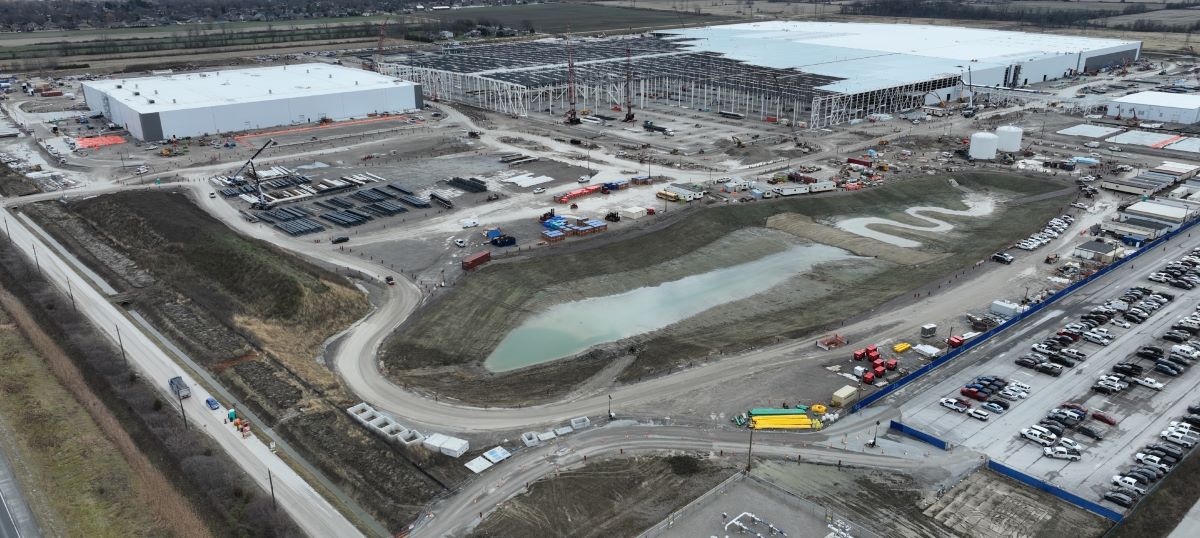Key investments, such as the Stellantis and LG Energy Solution (LGES) joint venture NextStar Energy EV battery plant in Windsor, Ontario should result in net labour gains in the ICE-to-EV transition, says a labour study.
A recent study by Future of Canada’s Automotive Labourforce (FOCAL) initiative concludes that Canada’s economy could gain significant jobs from the coming EV transition.
While the focus of the study was on manufacturing employment, aftermarket readers may find it is useful to note the positive economic impact in the expected long-term transition from ICE vehicle production.
In addition, it should also be noted that while there has been much discussion regarding the service needs of EVs, at this point any assumptions that they are “maintenance free” should be soundly disregarded.
A recent study across 20 countries by Solera, which provides software, data, and services to a range of automtoive related segmetns including collision and service found:
- Higher Repair Costs for EVs: On average, EV repair costs are 29% higher than ICE vehicles globally.
- Higher Parts Cost Disparity: EV parts are, on average, 48% more expensive, including components like high-voltage batteries and control units.
- Higher Notable Part Costs: EV battery systems represent the highest part cost item, significantly surpassing costs for components like headlights.
- Higher Frequency of Replacements for some parts: Certain parts like rear bumper absorbers and reinforcements show notably higher replacement rates in EVs.
This adds to other recent study findings from studies have found that, while the maintenance costs for EVs is less than ICE, it amounts to a saving of a couple of thousand dollars over five years, and that’s on relatively new vehicles. A study by Consumers Reports going back to 2020–which may or may not be accurate looking forward–showd that BEVs and PHEVs will both cost consumers about $4,600 less to repair and maintain over their lifetimes, compared with ICE models at about $9000. But that’s over the lifetime of the vehicle, which the study is not clear on but could be more than 10 years.
In addition, anecdotal research is finding that higher labour inputs for repairs — due to the higher than “normal” need to repair electronci components rather than simply replacing them due to cost and availabilty.
Getting back to the FOCAL research,
The FOCAL analysis on the economic impact of Canada’s automotive industry’s transition from the production of internal combustion engine vehicles (ICEVs) to battery electric vehicles (BEVs). FOCAL is managed by the Canadian Skills, Training and Employment Coalition (CSTEC) in partnership with the Automotive Policy Research Centre (APRC) and Prism Economics and Analysis.
To reflect the uncertainty surrounding the transition to BEVs, FOCAL examined the economic and labour market implications of the transition using three sets of automotive and battery supply chain production assumptions.
In the first scenario, FOCAL assumed that there would be widespread consumer acceptance of the shift towards BEVs. In this scenario, Canada’s automotive manufacturing industry, supported by efforts to secure additional BEV production mandates, sees a significant increase in its assembly capacity to over 1.7 million vehicles by 2040.
Concurrently, the recently announced battery cell, module, and material production facilities become operational, and Canada’s mining industry is able to produce most of the minerals needed to supply domestic battery production. Using these assumptions, FOCAL found that the job gains in assembly, battery production, and mining were significantly greater than the jobs lost in internal combustion engine and powertrain production. The net gain to the Canadian economy could be over $50 billion and close to 100,000 jobs could be created by the end of this transition.
The net gain to the Canadian economy could be over $50 billion and close to 100,000 jobs could be created by the end of this transition.
FOCAL also simulated two other scenarios. One assumes consumers don’t accept BEVs as quickly as some analysts hope, and that Canada is producing a mix of ICEVs, BEVs and hybrid electric vehicles in 2040 while maintaining current levels of vehicle production.
In this scenario, Canada is producing significantly fewer batteries and has to import the vast majority of battery minerals. There is short term net job loss and less economic contribution from the sector in this scenario, but by 2040, the jobs gained from battery production offset job losses in the manufacturing of ICEV parts, there is little change in sector employment and economic output by 2040.
A third scenario assumes consumers accept BEVs and that vehicle production remains at current levels—however, the industry doesn’t get its mining operations and battery material processing up and running as efficiently as in the first scenario. The economic and labour market implications are less impressive here than in scenario one, but there is still net job gain of approximately 25,000 by 2040. All results and assumptions are detailed in the newly released report.
“We wanted stakeholders to understand both the potential upside for the Canadian economy, and that there is a lot of uncertainty,” said Ken Delaney, Executive Director of FOCAL. Delaney also added, “Considering the importance of the auto industry to Canada’s economy and the number of jobs at stake, it is important that all stakeholders understand the implications of this looming transition.”
“The economic and labour market gains resulting from the newly announced battery manufacturing operations are expected to offset, and in some scenarios, exceed the output and job losses in internal combustion engine and powertrain manufacturing,” said Bassel Kazzaz, FOCAL’s Research Director.
The automotive industry including its supply chain contributes over 75 billion dollars in economic activity to the Canadian economy and provides over 200,000 jobs for Canadians. Along with oil and gas, automobiles and automotive parts are the two largest exports Canada produces.
The Future of Canadian Automotive Labourforce (FOCAL) Initiative, is funded in part by the Government of Canada’s (Sectoral Workforce Solutions Program).


0 Comments